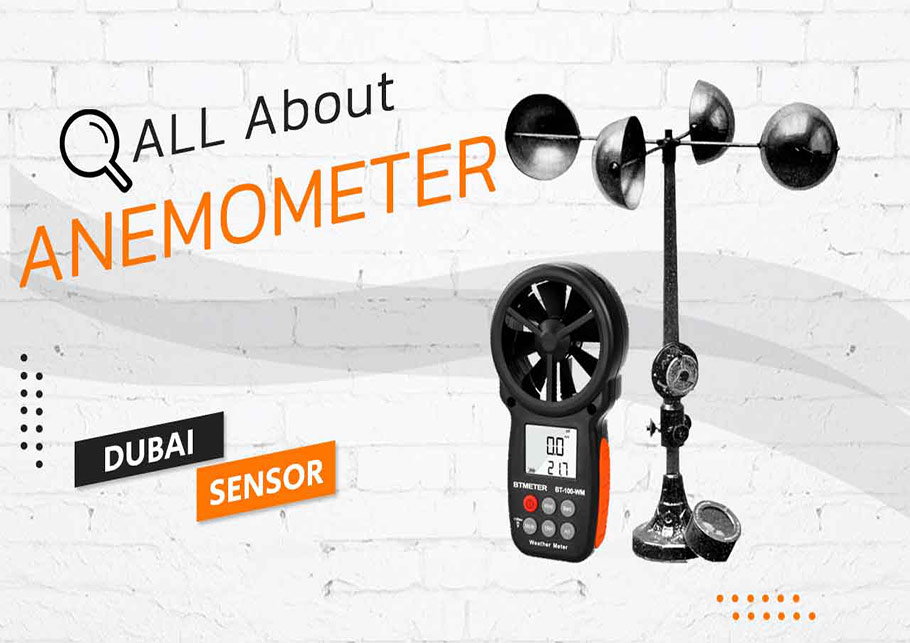Professional Tips for Adjusting Your Anemometer for Ideal Performance
Professional Tips for Adjusting Your Anemometer for Ideal Performance
Blog Article
All You Need to Understand About Anemometers: How They Function, Why They Matter, and Where to Use Them
Anemometers, however frequently forgotten in the realm of scientific tools, play a vital duty in various fields, using beneficial insights into wind speed and air flow patterns. As we dive right into the intricacies of anemometer innovation, we will certainly reveal the internal functions of these devices, their relevance, and the key considerations when picking the best anemometer for details applications.

Anemometer Fundamentals
A necessary instrument used to determine wind speed and instructions, the anemometer plays an important role in meteorology and numerous markets. An anemometer generally is composed of three or 4 cups that turn in the wind, a vane that points right into the wind, and sensors to track the turnings or movements.
There are different sorts of anemometers readily available, including mug anemometers, vane anemometers, hot-wire anemometers, and sonic anemometers, each with its unique functions and applications. Cup anemometers are generally utilized for standard wind speed measurements, while vane anemometers are favored for directional measurements. Hot-wire anemometers are ideal for low airspeeds, and sonic anemometers are perfect for high-precision dimensions in study and industrial setups. Comprehending the fundamentals of anemometers is necessary for accurate wind information collection and evaluation throughout different markets.
Concepts of Anemometer Procedure
Building on the fundamental understanding of anemometer essentials, the concepts of anemometer operation clarify the technicians behind wind rate and instructions measurements. Cup anemometers, for circumstances, have three or more mugs that capture the wind, causing them to spin faster as the wind speed rises. Hot-wire anemometers count on a heated cable that cools down as wind passes over it, with the rate of cooling down identifying the wind speed.
Value of Anemometers
Anemometers play an important duty in measuring wind rate and direction, giving vital data for weather forecasting, climate researches, ecological surveillance, and aeronautics procedures. Meteorologists depend on anemometers to collect precise wind data, helping them recognize climate patterns, forecast tornados, and problem timely warnings to the public. Wind ranch drivers utilize anemometers to evaluate wind conditions and make best use of electricity manufacturing from wind generators.
Applications Throughout Different Industries
Applications of anemometers span throughout diverse sectors, showcasing their adaptability and utility past meteorology. In the eco-friendly power sector, anemometers play a crucial function in assessing this hyperlink wind problems for wind farm positionings, making certain optimal power production. Industries like building and construction and mining use anemometers to check wind speeds, crucial for security protocols, particularly when operating at heights or in open-pit mines where solid winds can pose dangers. Anemometers are also important in the aviation market, assisting pilots in understanding airspeed and wind direction for secure take-offs and touchdowns. The maritime sector benefits from anemometers for ship navigating, aiding sailors expect climate modifications and adjust paths appropriately. In farming, anemometers aid farmers in handling plant spraying by giving real-time information on wind rate to prevent drift. Anemometers discover applications in A/c systems to maximize air flow and improve power efficiency in buildings. The diverse use situations of anemometers emphasize their relevance across various industries, highlighting their vital duty in boosting functional safety and security and efficiency (anemometer).

Choosing the Right Anemometer for Your Requirements
For basic objectives, a mug anemometer is appropriate for measuring wind rate, while a vane anemometer gives wind instructions data. Hot-wire anemometers are perfect for reduced airspeed dimensions, and ultrasonic anemometers provide high accuracy and resilience.

Final Thought
In final thought, anemometers play an important role in measuring wind rate and direction across numerous industries. Understanding the principles of anemometer procedure is vital for selecting the appropriate device for details requirements. From meteorology to aeronautics, anemometers are important tools for collecting exact data and making certain safety and security in different applications. When choosing the most appropriate gadget for measuring wind conditions., it is vital to consider the relevance of anemometers in order to make informed choices.
There are different kinds of anemometers available, including cup anemometers, vane anemometers, hot-wire anemometers, and sonic anemometers, each with its special attributes and applications. Cup anemometers are typically utilized for fundamental wind rate dimensions, while vane anemometers are preferred for directional measurements. Hot-wire anemometers are suitable for low airspeeds, and sonic anemometers are suitable for high-precision dimensions in study and commercial setups.Building on the foundational understanding of anemometer basics, the principles of anemometer operation elucidate the mechanics behind wind speed and direction measurements. For general purposes, a cup anemometer is suitable for determining wind speed, while a vane anemometer offers wind direction data.
Report this page